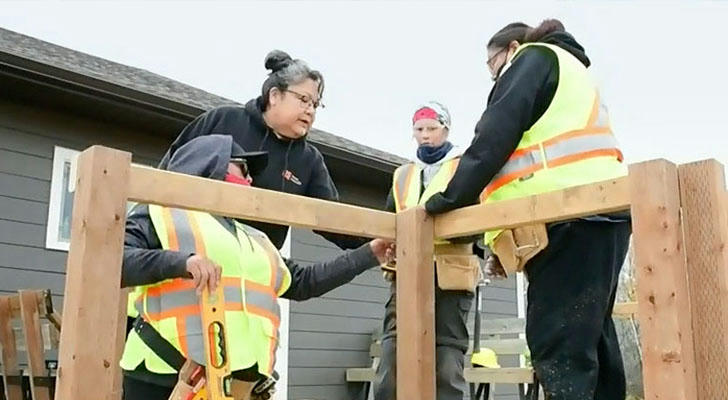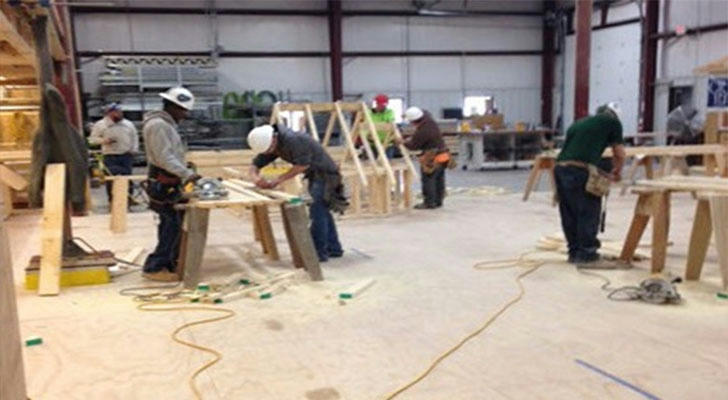Salary Prospects and Job Opportunities Analysis for Carpenter Training
Carpentry is a skilled trade that offers a diverse range of employment opportunities across the United States. From constructing residential homes to working on commercial projects and infrastructure developments, carpenters are in consistent demand. This article provides a comprehensive analysis of the salary prospects and job opportunities available to carpenters in the USA, with a focus on the impact of carpenter training on career advancement and earnings potential.

Overview of the Carpentry Industry in the USA
The carpentry industry in the USA encompasses a wide array of roles, including framing carpenters, finish carpenters, formwork carpenters, and general construction carpenters. Carpenters work on various projects, such as building houses, installing doors and windows, constructing bridges, and creating furniture.
According to the U.S. Bureau of Labor Statistics (BLS), as of 2024, there are approximately 980,000 carpenters employed across the country. The industry is driven by factors such as population growth, urbanization, infrastructure development, and renovation projects. The demand for skilled carpenters remains relatively stable, with opportunities in both residential and commercial construction sectors.
Impact of Carpenter Training
Carpenter training is essential for developing the skills and knowledge required to succeed in this trade. Formal training programs provide aspiring carpenters with a solid foundation in blueprint reading, mathematics, construction techniques, safety practices, and the use of hand and power tools.
There are several pathways to becoming a trained carpenter in the USA:
1. Apprenticeship Programs
Apprenticeship programs are a popular choice for individuals seeking comprehensive carpenter training. These programs typically last between three and five years and combine classroom instruction with on-the-job training under the supervision of experienced carpenters. Apprentices earn a wage while gaining practical skills and learning industry standards. Apprenticeship programs are often offered through unions, trade associations, and employers.
2. Vocational Schools and Technical Colleges
Vocational schools and technical colleges offer certificate and diploma programs in carpentry. These programs provide hands-on training in various aspects of carpentry, such as framing, roofing, and interior finishing. The duration of these programs can range from several months to two years.
3. On-the-Job Training
Some carpenters acquire skills through informal on-the-job training, working as helpers or laborers under the guidance of experienced carpenters. While this path can lead to a career in carpentry, it may take longer to acquire the necessary skills and knowledge compared to formal training programs.
Salary Expectations for Carpenters in the USA
The salary prospects for carpenters in the USA vary depending on factors such as experience, location, skill level, and union affiliation. The BLS reports that the median annual wage for carpenters in May 2023 was approximately $56,560. However, earnings can range from less than $35,000 to more than $80,000 per year.
Entry-level carpenters typically earn lower wages, while experienced carpenters with specialized skills and certifications can command higher salaries. Carpenters working in metropolitan areas and regions with high construction activity often earn more than those in rural areas.
Impact of Training on Salary
Carpenter training can have a significant impact on salary potential. Carpenters who complete apprenticeship programs or vocational school training tend to earn higher wages compared to those with only on-the-job training. Formal training programs provide carpenters with a broader skill set and industry-recognized credentials, making them more attractive to employers.
Furthermore, carpenters with specialized skills such as finish carpentry, cabinet making, or historic restoration often earn premium wages due to the demand for their expertise. Obtaining certifications from organizations such as the National Center for Construction Education and Research (NCCER) can also boost earning potential.

Job Opportunities for Carpenters in the USA
The job outlook for carpenters in the USA is projected to be relatively stable over the next decade. The BLS forecasts that employment of carpenters will grow about 2% from 2022 to 2032, resulting in approximately 22,000 new job openings each year, on average, over the decade.
The demand for carpenters is driven by factors such as new construction, renovation projects, infrastructure development, and maintenance activities. Carpenters are employed by construction companies, contractors, government agencies, and self-employed businesses.
Opportunities in Residential Construction
Residential construction offers numerous job opportunities for carpenters, particularly in areas experiencing population growth and housing shortages. Carpenters are involved in all stages of residential construction, from framing and roofing to installing doors, windows, and interior finishes.
Opportunities in Commercial Construction
Commercial construction projects such as office buildings, retail stores, and industrial facilities also provide employment opportunities for carpenters. Carpenters may work on formwork, scaffolding, interior build-outs, and other construction tasks.
Opportunities in Infrastructure Development
Infrastructure development projects such as bridges, highways, and tunnels require skilled carpenters to construct formwork, build supports, and perform other carpentry tasks. Government investment in infrastructure projects can create additional job opportunities for carpenters.
Career Advancement Opportunities
Carpenters can advance their careers through a combination of experience, training, and skill development. Some carpenters choose to specialize in a particular area of carpentry, such as finish carpentry or cabinet making. Others may pursue supervisory roles, such as foreman or superintendent.
Experienced carpenters can also start their own businesses, working as independent contractors or hiring employees to expand their operations. Entrepreneurship offers opportunities for higher earnings and greater autonomy.
Challenges and Considerations
While carpentry offers rewarding career opportunities, it also presents certain challenges:
- Physical Demands: Carpentry can be physically demanding, requiring strength, stamina, and the ability to work in various weather conditions.
- Safety Hazards: Carpenters face potential safety hazards such as falls, cuts, and injuries from power tools. Adherence to safety practices and the use of personal protective equipment are essential.
- Economic Fluctuations: The carpentry industry is subject to economic fluctuations, which can impact job security and earnings.

Conclusion
Carpenter training is a valuable investment for individuals seeking a rewarding and stable career in the construction industry. Formal training programs provide aspiring carpenters with the skills, knowledge, and credentials needed to succeed in this trade. The salary prospects and job opportunities for carpenters in the USA are promising, particularly for those with specialized skills and certifications. By pursuing carpenter training and staying updated on industry trends, carpenters can enhance their career prospects and earnings potential.
